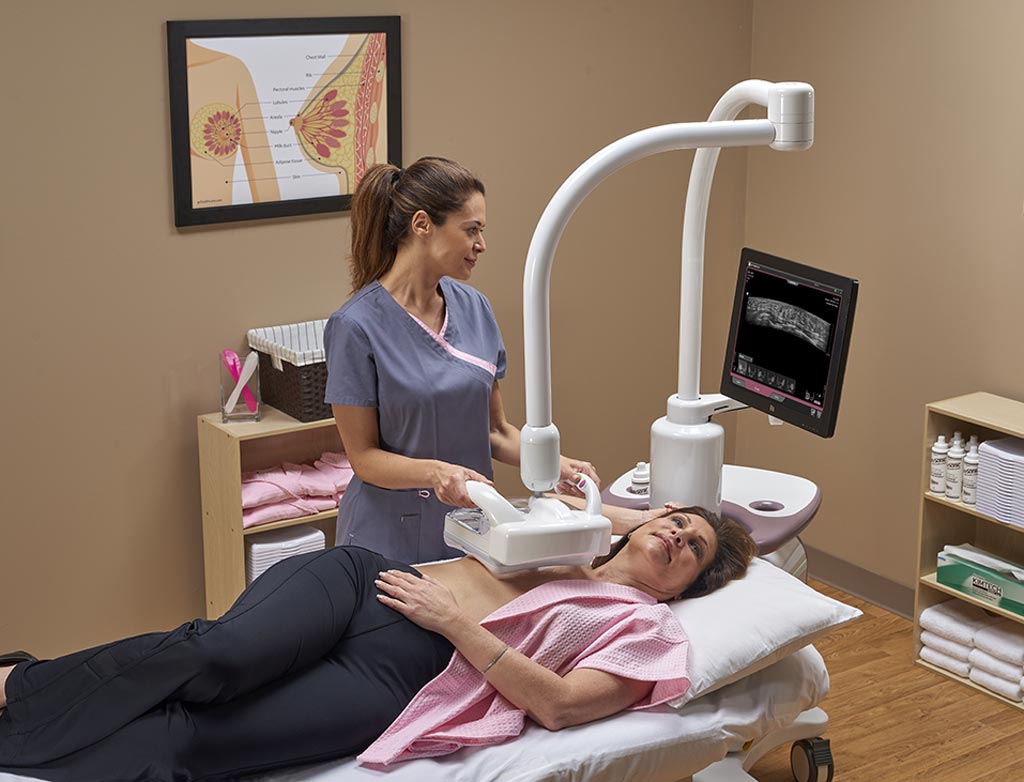Automated Ultrasound Technology Improves Dense Breast Acquisitions
By MedImaging International staff writers
Posted on 18 Dec 2018
An innovative mammography supplemental system based on automated breast ultrasound (ABUS) can improve dense breast cancer detection rates by 55%.Posted on 18 Dec 2018
The GE Healthcare (GE, Little Chalfont, United Kingdom) Invenia 2.0 ABUS system provides updated automatic volumetric ultrasound scanning, using a high-frequency reverse curve transducer and advanced algorithms that automate the imaging process. The three dimensional (3D) volumes are displayed in a series of coronal view slices from skin surface to the chest wall using proprietary pattern recognition software, resulting in rapid and intuitive analysis of intricate breast anatomy and pathology.

Image: The Invenia 2.0 ABUS system imaging dense breast tissue (Photo courtesy of GE Healthcare).
Image optimization algorithms include the cSound Imageformer, a software-based graphics processor that provides operator-independent acquisition to ensure high fidelity and reproducibility. cSound also allows significantly more data to be used so as to create images that are automatically optimized in the focal zones, with no image manipulation required. Additional software features include breast border and chest wall detection, tissue equalization, and nipple shadow compensation. A high-resolution touch screen display helps to quickly and easily maneuver through the Invenia ABUS exam.
To improve the patient experience, the gentle shape of the reverse curve transducer follows the natural contour of the breast, providing increased contact and helping to ensure comprehensive coverage. The 15 cm large field-of-view transducer is easy to position and maintains even compression while scanning. Mammography exams can be customized with programmable scan protocols and adjustable scan depths and compression levels; with the touch of a button, the operator can also shorten scan time once breast tissue acquisition is complete.
“We believe ABUS can help clinicians find significantly more cancers than mammography alone, especially in women with dense breasts,” said Luke Delaney, general manager of automated breast ultrasound at GE Healthcare. “As breast ultrasound technology continues to advance, we are investing to continually improve image quality, workflow, and patient comfort – all of which contribute to early detection and improved outcomes.”
Breast density is a measurement of the amount of fatty tissue versus the amount of fibrous tissue in the breast. Because both tumors and dense tissue appear white on a mammogram, the tumors often remain masked, resulting in almost one third them invisible to X-ray mammography. According to a 2014 report published by the Journal of the U.S. National Cancer Institute, an estimated 43.3% of women between the ages of 40 and 74 years old have extremely dense breast tissue.
Related Links:
GE Healthcare














